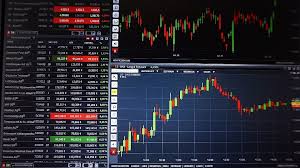
Understanding Forex Trading Time: Maximize Your Profits
The world of forex trading is not just about understanding currency pairs; it’s also about understanding when to trade. Timing can significantly affect your trading strategy and outcomes. Hence, knowing the best times to enter and exit the market is crucial for any trader. For detailed insights on trading practices, you can visit forex trading time Trading Broker KH.
What is Forex Trading Time?
Forex trading time refers to the hours in which the forex market is open for trading. Unlike stock markets, which have specific trading hours during the day, the forex market operates 24 hours a day during the business week. This continuous trading time is made possible due to the various forex trading sessions that occur worldwide, allowing traders to engage at any hour they choose.
The Four Major Forex Trading Sessions
The forex market is divided into four major trading sessions: the Sydney session, the Tokyo session, the London session, and the New York session. Each of these sessions has unique characteristics that can impact trading strategies.
1. Sydney Session
The Sydney session opens the forex market each week. It starts at 10 PM GMT on Sunday and closes at 7 AM GMT on Monday. This session is typically slower than the others because it overlaps primarily with the Asian trading sessions. However, it can be a great time for traders interested in trading the Australian and New Zealand dollars.
2. Tokyo Session
Also known as the Asian session, the Tokyo session runs from 12 AM GMT to 9 AM GMT. This session is characterized by lower volatility compared to the European and American sessions. Nonetheless, it’s the best time to trade currencies like the Japanese yen, and it often sets the tone for trading during the day.
3. London Session
The London session overlaps with both the Sydney and New York sessions. Starting at 8 AM GMT and ending at 5 PM GMT, this is considered the most volatile trading session due to the high volume of trading activity. Many traders prefer this session as it presents ample opportunities for profit, especially during the overlaps with the other sessions.
4. New York Session
The New York session runs from 1 PM GMT to 10 PM GMT. It is the second-largest trading session in terms of volume and volatility. The New York session often sees significant price movements as traders react to economic news releases and updates, offering immense opportunities for profit.
Understanding Overlaps
The overlap between trading sessions is significant for forex traders. The most notable overlap occurs between the London and New York sessions, which runs from 1 PM to 5 PM GMT. This period is characterized by heightened activity and significant price movements, making it an ideal time for traders looking to capitalize on market volatility.
How Timing Affects Trading Strategies

Timing can impact not only profit potential but also risk management in forex trading. Here are a few considerations on how the time of trading can influence your strategies:
1. Market Conditions
Different times of the day can present varying market conditions. For example, trading during the London session might involve more volatility and higher risks, while the Sydney session could be more stable but slower. Depending on your risk tolerance, you might prefer trading during certain hours.
2. Economic News Releases
Economic news releases often occur at specific times and can cause significant market volatility. Traders should be aware of these releases and plan their trading around them, as trading before or after a major announcement can lead to dramatic price movements.
3. Spreads and Costs
The hours you choose to trade can also affect the spreads you encounter. Spreads often widen during off-peak hours and tighten during peak hours when the market is busy. Trading during optimal hours can help you lower your transaction costs.
Best Practices for Timing Your Trades
In light of the various trading sessions and market dynamics, here are a few best practices to consider for timing your trades:
1. Monitor Session Overlaps
Take advantage of the overlaps between trading sessions wherever possible. This is typically when you will find the most liquidity and volatility, creating more opportunities for trading.
2. Stay Informed
Keep up with economic calendars and news announcements to be aware of when significant data will be released. This information can help you time your trading appropriately and decide whether to enter or exit a position before or after the news hits the market.
3. Develop a Routine
Having a consistent trading routine that aligns with your trading strategy and chosen trading session can help you stay organized and effective. Whether you prefer to trade during peak hours or when the market is quieter, consistency can help reinforce your trading discipline.
Conclusion
Understanding forex trading time is crucial for traders aiming to maximize their profitability and manage their risks. Each trading session provides unique opportunities and challenges that can impact trading strategies. By being aware of the market hours, session overlaps, and economic releases, traders can make informed decisions and optimize their trading outcomes. As you develop your trading strategy, consider how timing interacts with your approach, and may your trading endeavors be fruitful!

Comentarios recientes